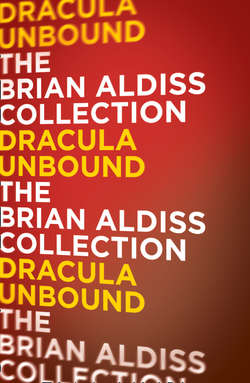Читать книгу Dracula Unbound - Brian Aldiss - Страница 6
Introduction
Оглавление‘I have to get on that train. I’m sure it could be done. It’s no worse than your sky-diving. Leap into the unknown – that’s what we’re all about, darling!’
‘Oh shit,’ she said.
And occasionally that is what a writer asks of his reader: take a leap into the unknown.
Bram Stoker was a man of the theatre, but he also wrote Dracula, a book never to be excelled in horror. I had already written of Frankenstein when, one fine morning on Boars Hill – the place we lived when the children and our cats were young – I realised: here was a pair. Frankenstein and Dracula. So I sat down at my desk and switched on my computer . . .
A lot of weight goes into what one might consider an over-ambitious thriller. Well, I have nothing against these considerations, or against thrillers. And I’m definitely on the side of over-ambition.
As proof of the latter, I went to Chelsea in London to inspect the famous Bram Stoker’s house. But for the purposes of my story, I removed it to my house on Boars Hill, a mile or so outside Oxford. Just to make it creepier.
Just for fun.
Dracula Unbound is a frivolous book in some aspects, but at its core is a serious consideration. For countless centuries, humankind considered Earth to be the centre of the universe: solid, immoveable, and indeed named after its most basic feature, the ground on which we walk. We still have no other, no better, name for it. Earth. (How about Hyperdrome?)
It was only in the year 1610 A.D. that everything changed. The astronomer Galileo Galilei had a telescope; he developed and improved its lenses and trained it on the great planet Jupiter. There he espied what came to be known as the Medicean stars – ‘four planets never seen from the beginning of the world right up to our day’ – in orbit about Jupiter. These are the bodies we now know as Io, Europa, Callisto, and Ganymede. Each has been visited in its turn by science fiction writers.
From that date on, only the deluded could believe in Earth’s centrality within the universe. Galileo wrote of his amazing discoveries in a book known in English as The Starry Messenger (Sidereus Nuncius). A copy of the book was sent at once to the English king, James the First. More importantly, the celebrated mathematician John Kepler also received a copy, and wrote that he at once accepted these discoveries: ‘Why should I not believe a most learned mathematician?’ he exclaimed.
Later, Kepler wrote The Dream (Somnium). Part of the purpose of his story was to describe what practicing astronomy would be like from the perspective of the Moon, to show the feasibility of a non-geocentric system. Some therefore regard Kepler as the first science fiction writer.
Galileo was warmly received by the ruling Medicis. But as the world changed about him, his personal world also changed. An account of some of these remarkable events is contained in a book by Dava Sobel, entitled Galileo’s Daughter. (Happily, I resemble Galileo in at least one respect: I too have a loving, brilliant and supportive daughter.) Through his eldest daughter Maria Celeste we learn something of Galileo and of life as it was before the dawn of the Renaissance. As a result of this remarkable period and what followed, we now see ourselves adrift in a solar system which forms just a minor part of the galaxy.
In my story, Van Helsing says of Bram Stoker, ‘He regards himself as discovering the secret of the universe, which of course he is about to reveal. You can never trust a man who thinks he knows the secret of the universe.’
Brian Aldiss
Oxford, 2013
